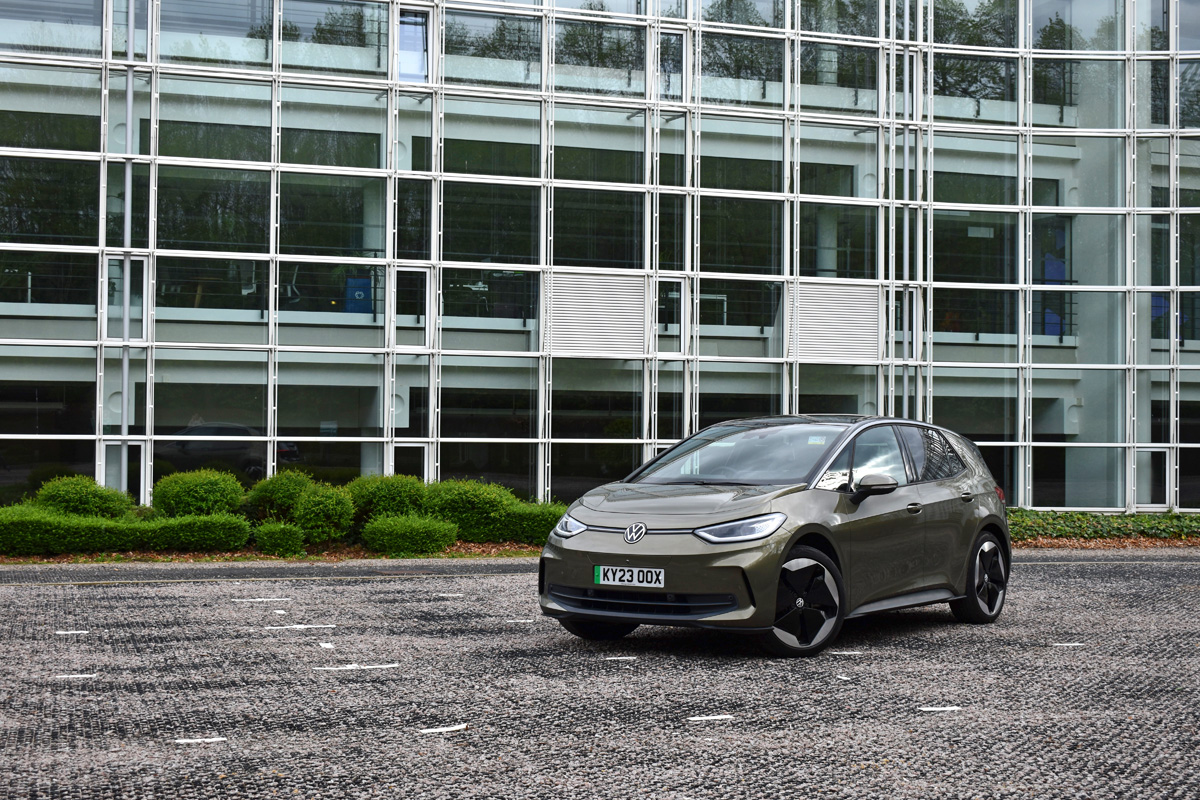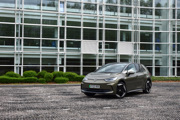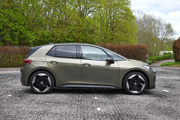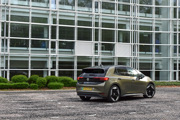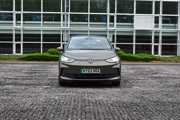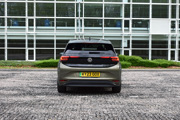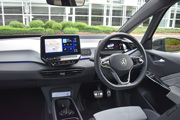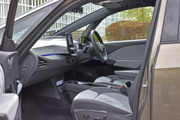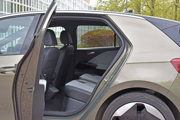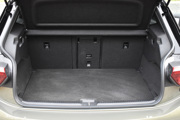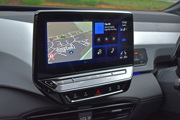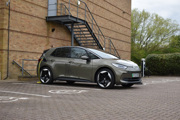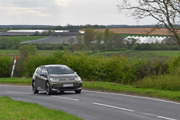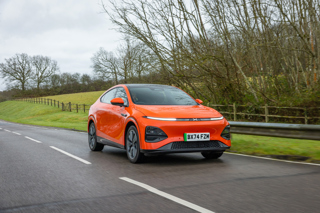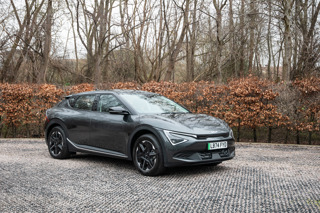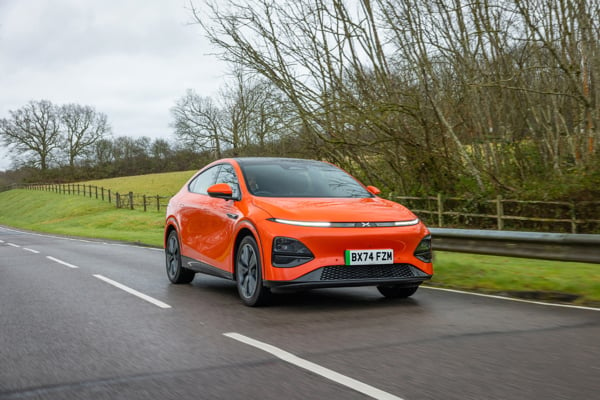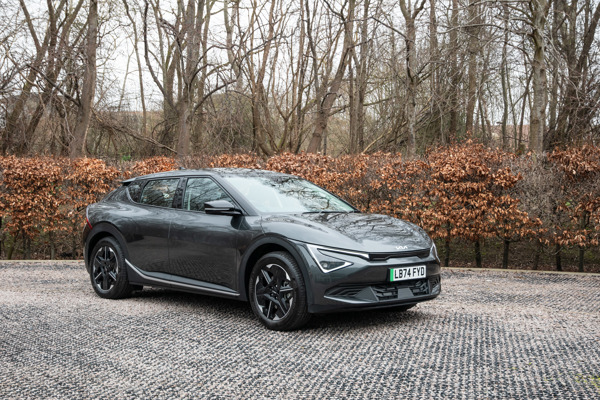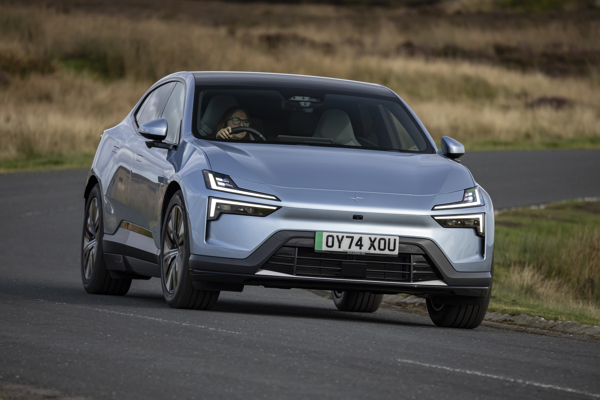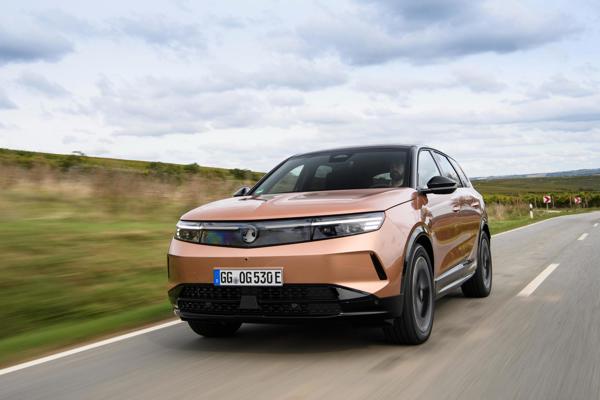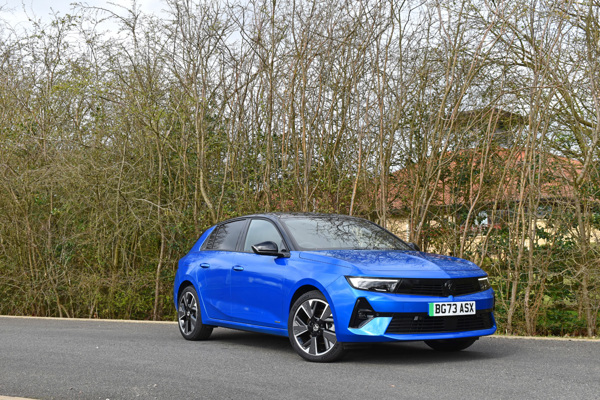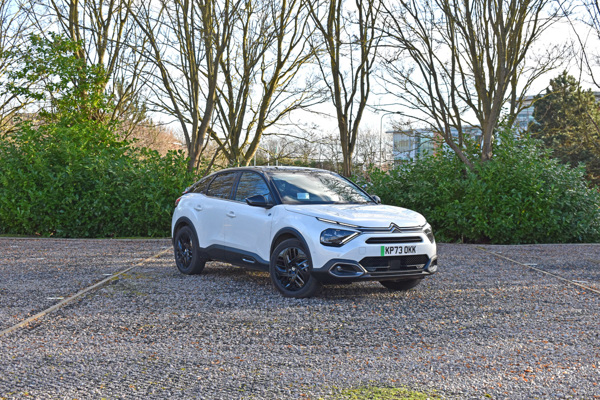Review
The ID3 has now returned to Volkswagen which leaves me with the most important question to answer. Should fleets put it on their choice lists?
Let’s have a look at it compared to some of its rivals.
As previously mentioned, the Cupra Born and the Volkswagen ID3 are almost identical Mechanically, both being built on Volkswagen’s MEB platform. The Born being the sportier looking of these models.
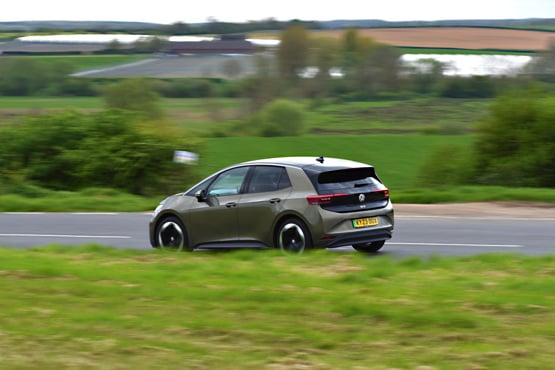
Using the Fleet News car cost comparison tool shows that the total cost per mile for these two cars is only separated by 2ppm over a 4yr/80,000 mile lifecycle. The ID3 at a cost of 44.24ppm and the Born at 42.54ppm. So as far as these sister brands go, it really comes down to whether you are looking for a car to appeal to a family driver or someone looking for a sportier option.
Rivals from other brands include the Renault Megane E-Tech which is cheaper than the ID3 (40.59ppm) thanks to its lower purchase price and lower SMR cost, or the much cheaper MG4 although neither of which have a battery option to match that in the ID3 Pro S.
Another key rival is the Hyundai Ioniq 5. It was a game changer in terms of usable electric range when it first launched in 2022 and while it can match the ID3 on power and battery capacity, it is more expensive and has higher depreciation.
All this makes the ID3 a solid fleet choice, a big battery (77kWh) with a fast charge capability (175kW DC) and decent range. Plenty of room for occupants (as long as there are only four of you) and a decent size boot (385l). It has a five-star Euro NCAP rating and is loaded with useful and intuitive safety and assistance tech.
Colour choices are limited but there are a few two-tone options like our olive green/black choice.
During our time with the ID3 Pro S we covered 5,700 miles and achieved an average consumption of 4.0mi/kWh - enough for a comfortable real-world range of 308 miles between charges.
Range exceeds WLTP
The ID3 is available with two different battery sizes: 58kWh or 77kWh. The official range figures of the larger 77kWh battery fitted to our ID3 Pro S gives a range of up to 347 miles (WLTP). The smaller 58kWh battery gives the ID.3 Pro a range of up to 266 miles (WLTP).
My last charge (pictured here) shows an impressive 387 miles range at 100% which is considerably higher than the WLTP figure, in fact as I write, the car is showing 90% full with 350 miles remaining.
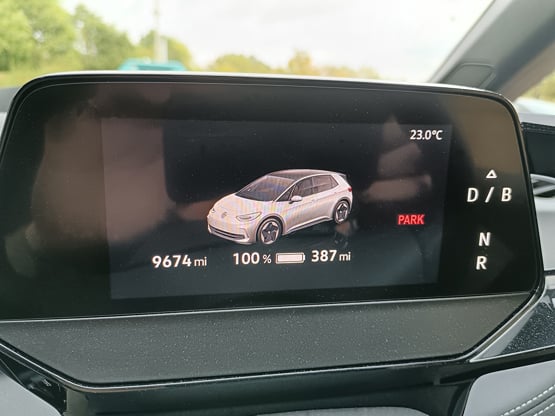
The battery is fitted flat in the vehicle floor, where it is protected from damage by a solid underbody guard. There are built-in water channels to keeps the system at its ideal operating temperature (about 25 degree C) this helps with power output, fast DC charging and battery life. After eight years or about 100,000 miles, Volkswagen say the battery will still has at least 70% of its original capacity.
The ID.3 requires an inspection service every two years. All the usual service items and legal requirements are checked along with the charging cable and the high-voltage battery, components and cables.
A three-year (first- and second-year manufacturer operated, third-year retailer-operated)/60,000-mile mechanical warranty is included as well as an eight-year or 100,000-mile high-voltage battery warranty (whichever is soonest) on material or manufacturing defects. The warranty applies to all Volkswagen pure electric cars.
In addition, the ID3 comes with a 12-year body protection guarantee and three-year paint warranty.
I mention the service and warranty details because I have started to notice a couple of small build quality issues with my car. Interior components used in the new ID3 are animal-free as standard and the ID3 features a high proportion of recycled materials.
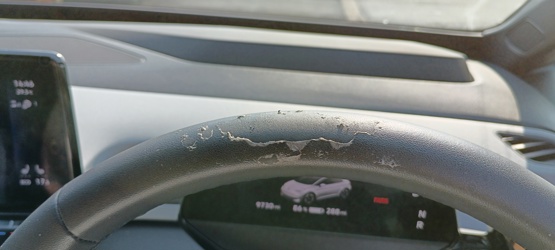
Unfortunately my steering when has started to peel. Mainly at the top, but also now at the bottom, it’s where I hold the wheel most of the time and it looks a bit like sunburn (pictured) it is gradually getting worse and it’s not a good look.
Also, the brake pedal has started squeaking, admittedly his is a minor gripe but not what ive come to expect from Volkswagen build quality.
Clever technology
The ID3 is a very clever car full of driver assistance systems that are a joy to use, but are we becoming lazy or forgetful as new car drivers?
The ID3 takes care of a lot of the day to day. It locks and unlocks with a thumbswipe, turns its own ignition on and off, can accelerate, brake and steer for itself thanks to the adaptive cruise control and lane keep assist, the headlights adjust themselves without dazzling other road users.
Each headlight module comprises 18 LED units, eleven of which can be individually switched off and dimmed and can automatically adjust between high and low beam.
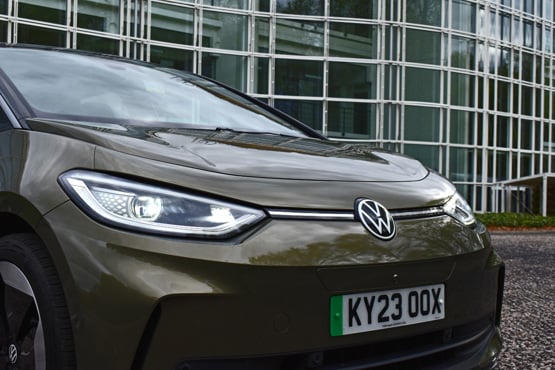
It applies its own handbrake and can automatically hold itself on an incline. It can read roadsigns, it has voice control, pre-setable seat positions and automatic rain sensing wiper and the interior temperature can be preheated to a desired temperature, which can be controlled by an app. I could go on, but you get the idea. It leads me onto the keyless start system.
Have you ever wondered if you can drive a car without the keys being present? It’s something I have thought about and have now inadvertently tested.
I pulled upto my house in the ID3 and gave my wife the keys to unlock the house door. As she left the car It alerted me that the key was no longer present with a small dashboard display and a series of beeps. My wife retuned to the car, handed me my wallet and I drove off, forgetting that I no longer had the keys. I drove all the way to my local supermarket (just five minutes from my house). It was only when I reached the carpark that I realised I didn’t have the keys so I couldn’t lock the car, nor could I re-start it as I had already put it into neutral. So there I sat until my wife brought me the keys. Theory tested.
It was down to operator error of course or at least operator forgetfulness, but I was surprised the car allowed me to drive away without the keys.
Looks divide but efficiency impresses
Has anybody else had any interior quality issue with their new Volkswagen? Let Fleet News know.
‘I really hate the look of that car’ was a surprise statement from a passerby while on a trip out the coast last week. I’m not sure if he was taking directly to me or just announcing his feelings to the world but he was talking about the ID 3.
I thought it was a bit of a harsh statement, sure the wheels on our model definitely divide opinion and arguably its sister car the Cupra Born is better looking, but I don’t think there’s anything to hate about the ID 3’s looks. The shape is optimised for aerodynamics and the proportions are less conventional, with emphasis put on optimising passenger space.
Maybe he just didn’t like the colour. He was wearing a vest and walking a pit bull, so I didn’t ask.
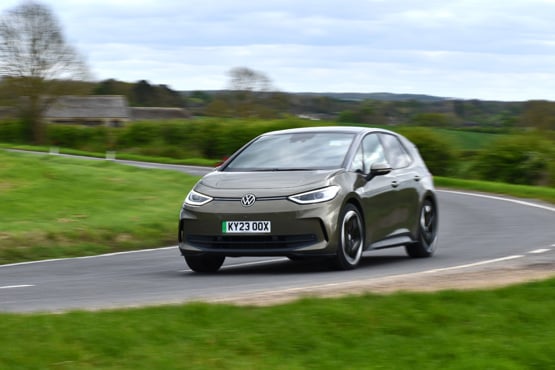
The ID 3 is Volkswagen’s third major chapter in its history, hence the name, the other two being the Beetle and Golf. It was Volkswagen’s first purpose-built electric vehicle, built on the modular electric drive (MEB) platform. Now that platform underpins the ID 4, ID 5 and ID 7, as well as the ID Buzz van, plus a range of models from other VW Group brands. Volkswagen is aiming to sell 20 million vehicles built on this platform by 2029.
The ID 3 is also rear engine and rear-wheel drive, like the original Beetle, with the motor and gearbox located on the rear axle. That together with the Pro-S’s larger battery means the car weighs in at a hefty 1,935 kg, the Pro model being 1,815 kg. For comparison a diesel Volkswagen Golf weighs 1,500kg.
The car generally caries its weight well, it has light steering and a tight turning circle which helps in town and has more than enough power for a car of this type. However on a twisty or bumpy road is where you feel the weight. Too much acceleration from a junction or lifting off the accelerator mid corner will make you aware of the car hefty rear end. Our car is equipped with Dynamic Chassis Control (DCC) - or adaptive dampers - so driving it in Sport mode firms up the suspension, which improves things a little.
During the trip the ID 3 was returning a consistent 4.0mi/kWh which means a useable 300-mile range can be expected without any drama.
Benefits of augmented reality
It’s not often you hear the phrase 'augmented reality' anymore. However, a quick online search reveals there are still plenty of companies offering the service. Rewind several years and it was the buzz word on Fleet News as we added app controlled, digitally interactive content into our magazines.
Augmented reality is an interactive experience that combines the real world and computer-generated 3D content. It might sound a bit sci-fi, but it is integrated into the head-up display on our ID3 as part of the optional £770 Interior Package. It’s the first time I’ve seen or used it in a vehicle.
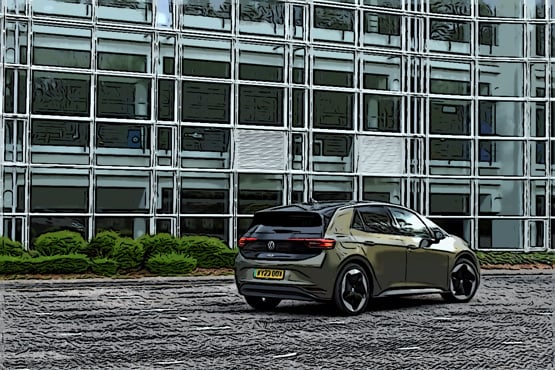
In the ID3, augmented-reality (AR) is a head-up display which projects information about speed and other vehicle functions, as well as navigation instructions onto the windscreen. For the driver, these instructions appear as though they are several metres in front of the vehicle – but are clearly recognisable and easy to differentiate from other road markings and signs. It’s controlled by a processing unit called the AR creator which uses data from the front camera, radar sensor and navigation map to position information correctly, meaning it can appear and disappear on the screen at the correct time and appears to move with the vehicle.
In addition, the system also shows information such as the distance to your destination and also the battery’s charge level.
For the most part it doesn’t seem any different to any other head up display, however, it’s most noticeable when using the navigation system. The AR technology projects large blue virtual direction arrows on the road surface in front of you. These arrows are integrated into the ‘real life’ environment and are displayed where you would drive or need to turn. The purpose of course is to help the driver keep their eyes on the road.
In addition to the direction arrows the ID3s navigation system is also connected to the ID light, a light bar which sits at the base of the windscreen across the top of the dashboard which shows an animated blue line for left or right turns. The ID light has the functions too like a pulsing green light for incoming calls and a red flashing light if an emergency stop is needed.
VW ID3 Pro S joins our fleet
The ID3 was the first electric vehicle based on Volkswagen’s MEB platform in 2019 and has now been refreshed. Volkswagen says that numerous suggestions from customers were taken on board and implemented as improvements when designing and updating to this second generation ID3.
The second-generation car gets a sharper exterior design, higher-quality, animal-free and sustainable interior materials, Volkswagen's latest-generation assist systems including the intelligent Electric Vehicle Route Planner to make the charging experience more straightforward and the latest software which is able to receive over-the-air updates.
The range of colours has also been extended and now includes Dark Olivine Green which is the colour of choice for our long-term test car.
It is powered by the same rear mounted electric motor from the first generation of the ID3, which produces 204PS of power and torque of 310Nm. Two battery sizes are available: 58kWh (Pro) and 77kWh (Pro S). The larger battery gives the ID3 Pro S a range of up to 339 miles (WLTP) and in the ID3 Pro, the 58kWh battery offers a range of up to 265 miles.
The Fleet News Electric Car and Van Tool estimates a real-world range for our ID3 of around 260 miles. We'll be looking forward to seeing how it performs.
With a charging capability of up to 170kW our Pro S test car can be charged from five to 80% within 30 minutes.
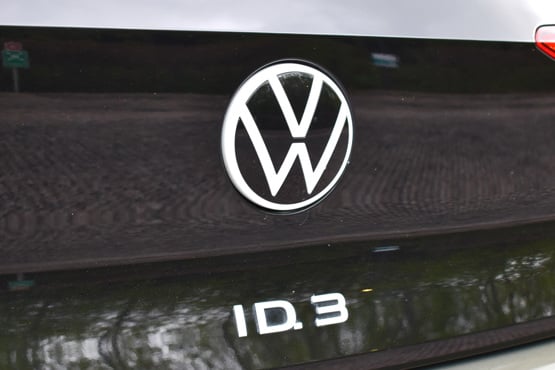
Pricing for the ID3 Pro S starts at £43,185. Our car is equiped with a number of options, boosting the price to £49,590. Chief among these are the £2,095 Driver Assistance Pack Plus, which includes blind spot monitor, 360-degree camera and keyless entry, and the £1,750 Exterior Pack. The latter includes Matrix LED headlights, an illuminated front grille and tinted rear windows.
Volkswagen refers to the ID3 as compact car however it measures 4.26 metres long, 1.81 metres wide and 1.56 metres high, which is on par with the Golf. The ID3 Pro S is only a four-seater, due its larger battery, which may put off some drivers. A small cubby area sits where the middle rear seat would have been, but it does at least offer increased space for the two rear passengers.
Thanks to its ‘wheel at each corner’ design the cabin is very roomy with plenty of arm, leg and head room for all. The boot has a capacity of 385 litres; this increases up to 1,267 litres with folded-down rear seat backrests and has handy under boot storage for the charge cable.
So far, the ID3 has been a pleasure to live with, I’ll cover more in detail over the coming months with the car.



